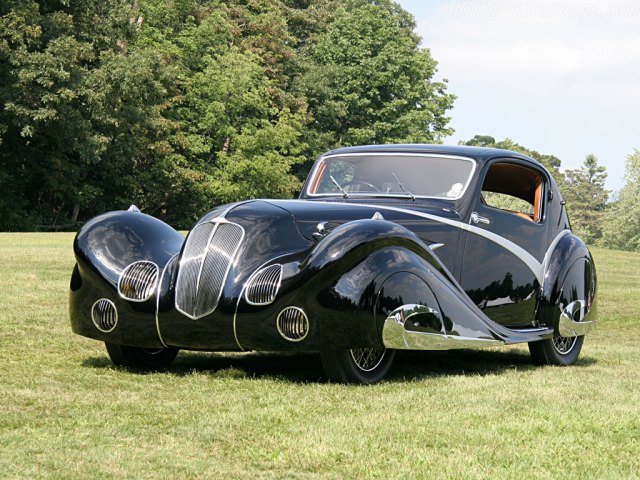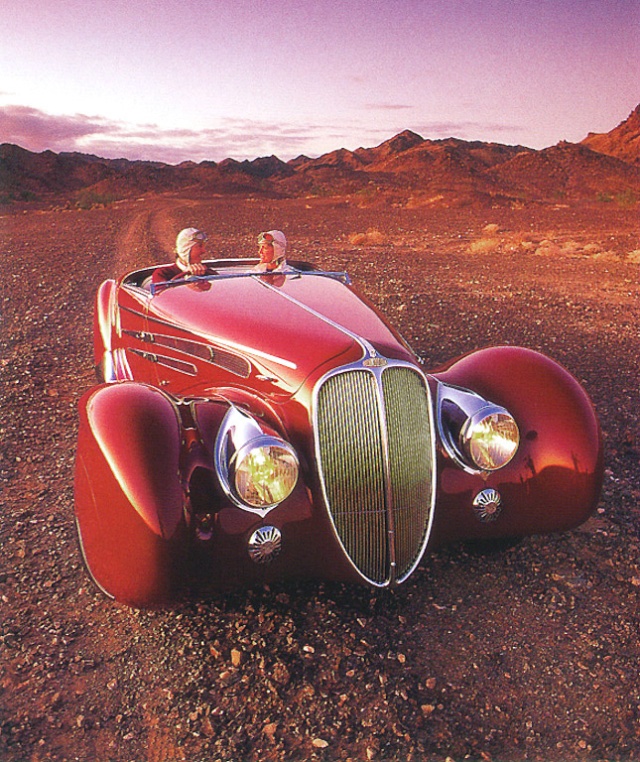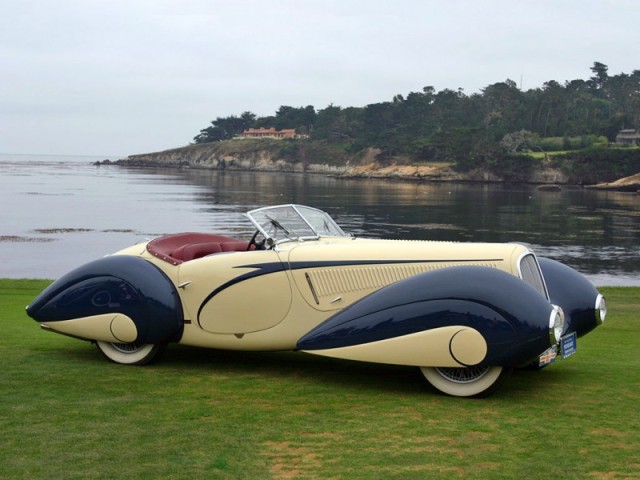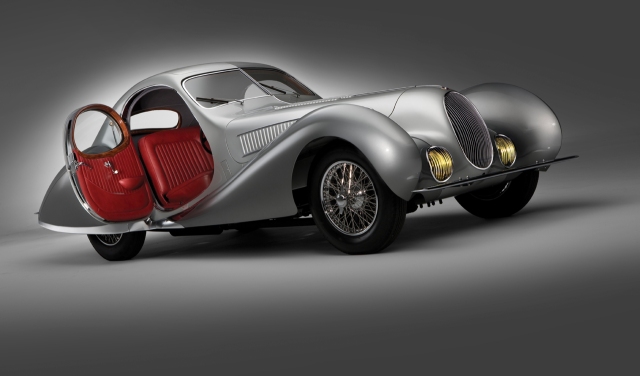A brief history of coach building for the unintiated: Cars used to be sold by car manufacturers as a rolling chassis with the engine, wheels, suspension, steering, brakes, etc. (all the mechanicals if you will) attached to the frame of the car. Buyers could then have the car taken to the coach builder of their choice who would then build a specific body for the car to meet the buyer’s specification. A buyer could purchase a complete car from the original manufacturer but the more stylish often chose instead to have something more special created for them. While there were many coach builders back in the day who created some very spectacular cars, no one has the portfolio of Figoni et Falaschi.
Giuseppe (Joseph) Figoni was born in Piacenza, Italy in 1894 but moved with his family to Paris at a young age. He began his metalwork career at age 14 as an apprentice at a wagon builder, then was called away to the war. Upon returning from WWI he opened a body shop in the Parisian suburbs. By 1925 he was building complete re-bodies for customer cars. Within a few years he was creating automobiles of spectacular vision and drama.
In 1935 Figoni took on Ovidio Falaschi as his business partner which allowed him to expand the business further. Falaschi was also originally from Italy but had been living in France. He managed the business side while also providing some input on designs. By 1936 Figoni et Falaschi showed their vision for the future at the Salon de l’Automobile in Paris with a Delahaye Type 135. The design took the breath of show visitors with it’s fully enclosed tear drop shaped fenders which Figoni called “enveloppantes.”


Figoni was significantly influenced by the emerging aviation industry. His work was focused on aerodynamics. All bodies were hand formed from sheet metal over ash bucks of his own creation based on initial sketch work. It was not uncommon for the chassis to be built, taken apart, and re-built–sometimes two or three times–before the exact lines were correct to his eye.
A big lover of the use of color in his designs, Figoni was excited to use newly created paints on his creations. Many of his cars were painted in two- or even three-tone paint schemes. With a great eye for design and a flair for the dramatic he even worked with top fashion designers to create clothing to match the lines and colors of his cars.
Falaschi would refer to the two of them as “true couturiers of automotive coachwork.” The next year they created a sensation with the “Goutte d’Eau” (tear drop) coupe they built on a Talbot-Lago T150SS. Things would never be the same in car design. It was clear now that a car could be more than just pretty. It could be art.









As for me, the best car, this Volkswagen Passat.